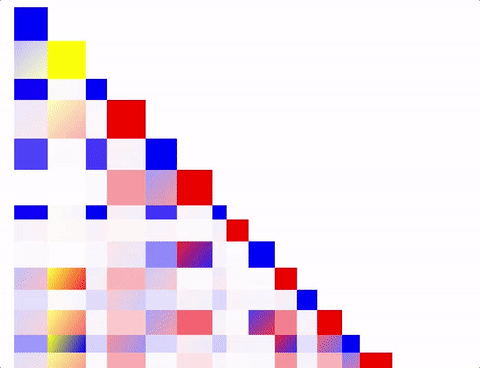Speaker Recurrence
Speaker Recurrence captures whether the candidates talk to each other and to the same topics instead of "next to each other". The basic idea of recurrence is to map the similarity of sequential turns within a discourse. Orginally, the measure was introduced by Angus et al. (2012) and was used to indicate conceptual recurrence. Contrary to the specification by Angus et al., we rely on topic similarity to map recurrence.

Topic Recurrence
The figure below illustrates the principle of topic recurrence. Please note that this visualzation is a prototype and is currently under development. In the figure, the actual turns are mapped on the diagonale - with the first turn on the upper left part of the triangle. The first blue rectangle mirrors the first introductiory words by the moderators. Then, Clinton (the yellow rectangle) replied to the question before the the moderator handed over the question to Trump. The rectangle on the left side of the diagonale demonstrate how similar the turns are. The more saturated the color, the more similar the turns with respect to their topics. In the beginning of the debate, we see that the moderators' turns (blue rectangles) are less similar to the candidates' tunrs. This is to be expected as the moderators most often structure the debate and pose smaller questions to the two candidates. However, we see that Trump in his first turn (red rectangle) agrees with Clinton and takes similar topics than her.
